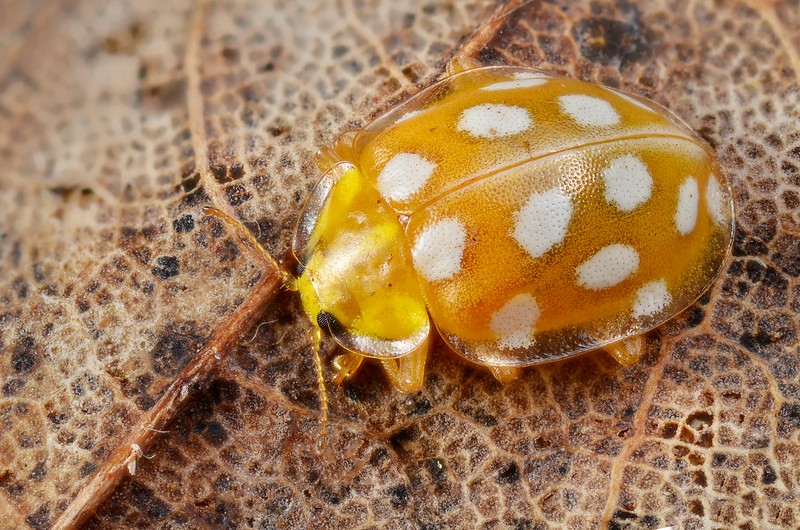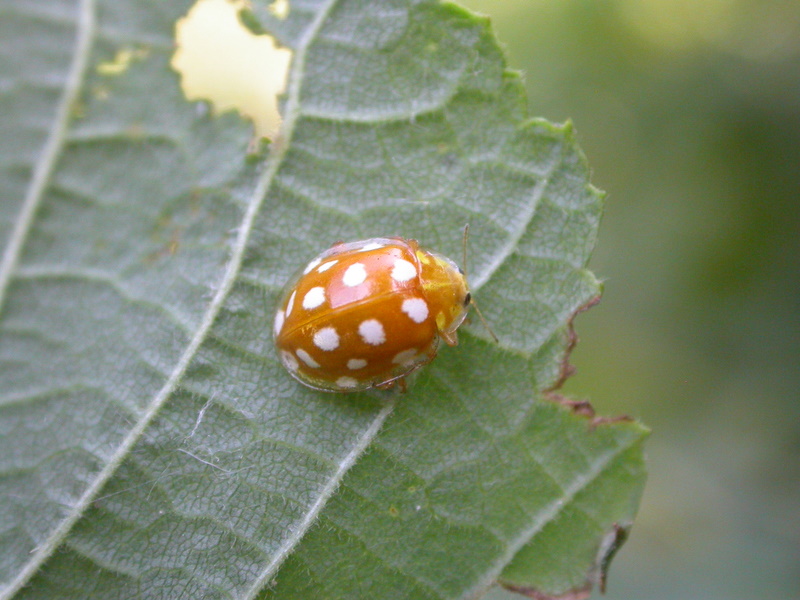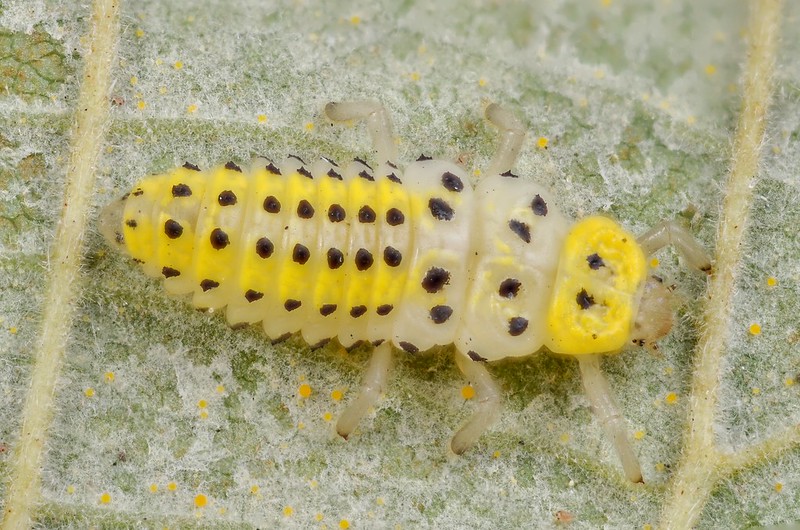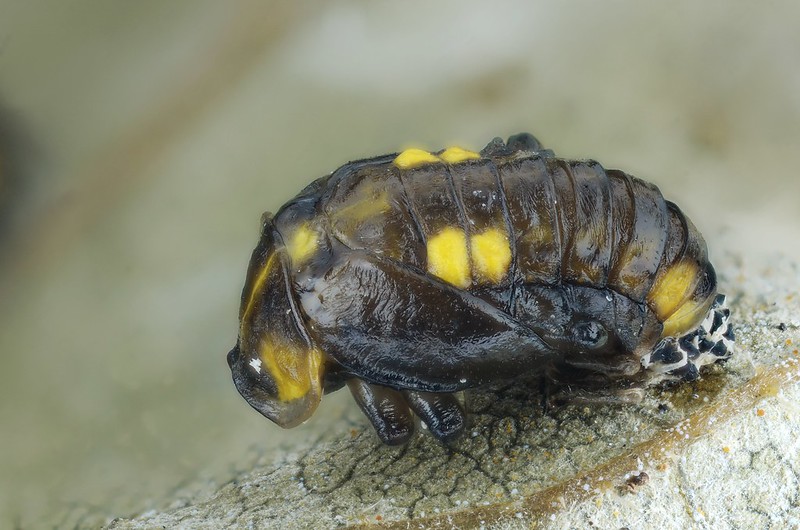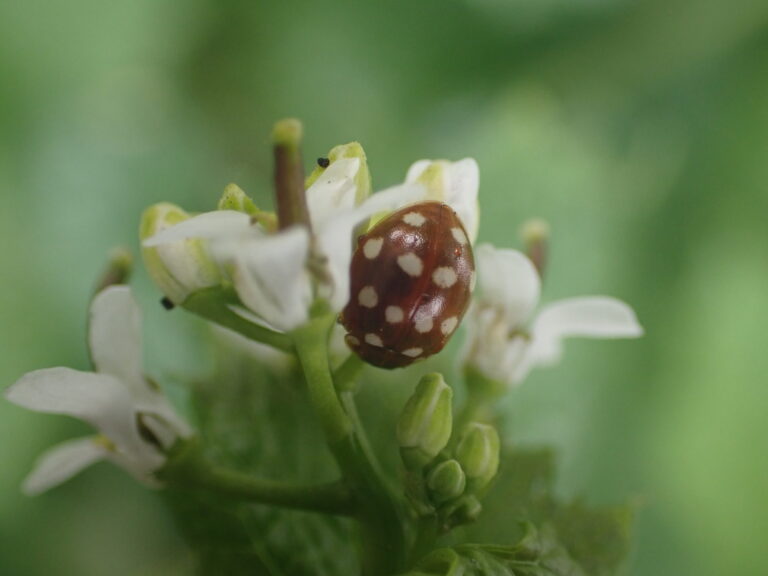The Orange Ladybird is a bright orange ladybird with 16 cream-white spots, often found near deciduous trees
Fast facts
- Common name(s)
- Orange Ladybird
- Scientific name
- Halyzia sedecimguttata
- When to see it
- Year round
- Diet
- Mildew
Description
The Orange Ladybird is a bright orange ladybird with 16 cream-white spots. It can be found in woodland, hedgerows, parks and gardens.
Identification
Adults
Adults have bright orange elytra (wing cases) with typically 16 cream-white spots. The orange pronotum (behind the head) and edging of the body can appear translucent. This species is around 4.5 to 6mm in length. The legs are orange and the spots do not fuse.
Did you know?
The Orange Ladybird was historically considered an indicator of ancient woodland. However, since the late 1980s, this species has expanded into other habitats and has adapted to feeding on trees such as Sycamore.
Larvae
The late-stage larvae are cream-white with two bright yellow longitudinal stripes running down the abdomen and black tubercles that resemble spots. The head is cream-white unlike that of the similar larvae of 22-spot Ladybirds.
Pupae
The distinctive pupae are largely black with bright yellow spots on the edge of the abdomen.
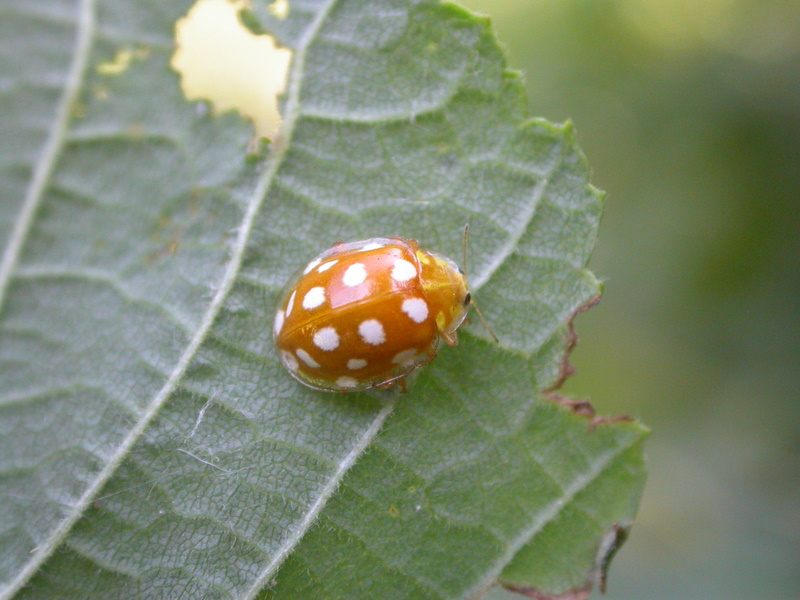
Spotted this ladybird?
Share your sighting of this and other North East Ladybird Spot Spotlight species to contribute to the conservation and study of our region’s ladybirds.
Similar species
The Cream-spot Ladybird also has cream-white spots. However, the Cream-spot Ladybird has a maroon-brown body and is not bright orange like the Orange Ladybird. The Cream-spot Ladybird is a target species of the North East Ladybird Spot and its species profile can be found here.
Ecology
Orange Ladybirds feed on powdery mildew growing on the leaves of deciduous trees. It is a woodland species but increasingly common on urban trees, particularly Sycamore, Oak and Ash. This species commonly overwinters in sheltered crevices of deciduous and coniferous trees. It can also be found overwintering in leaf litter.
The Orange Ladybird is attracted to light and so is frequently observed in moth traps.
Regional Distribution
The Orange Ladybird is recorded from Northumberland and County Durham with fewer records further north and west of the region. Nationally, this species is very widespread.
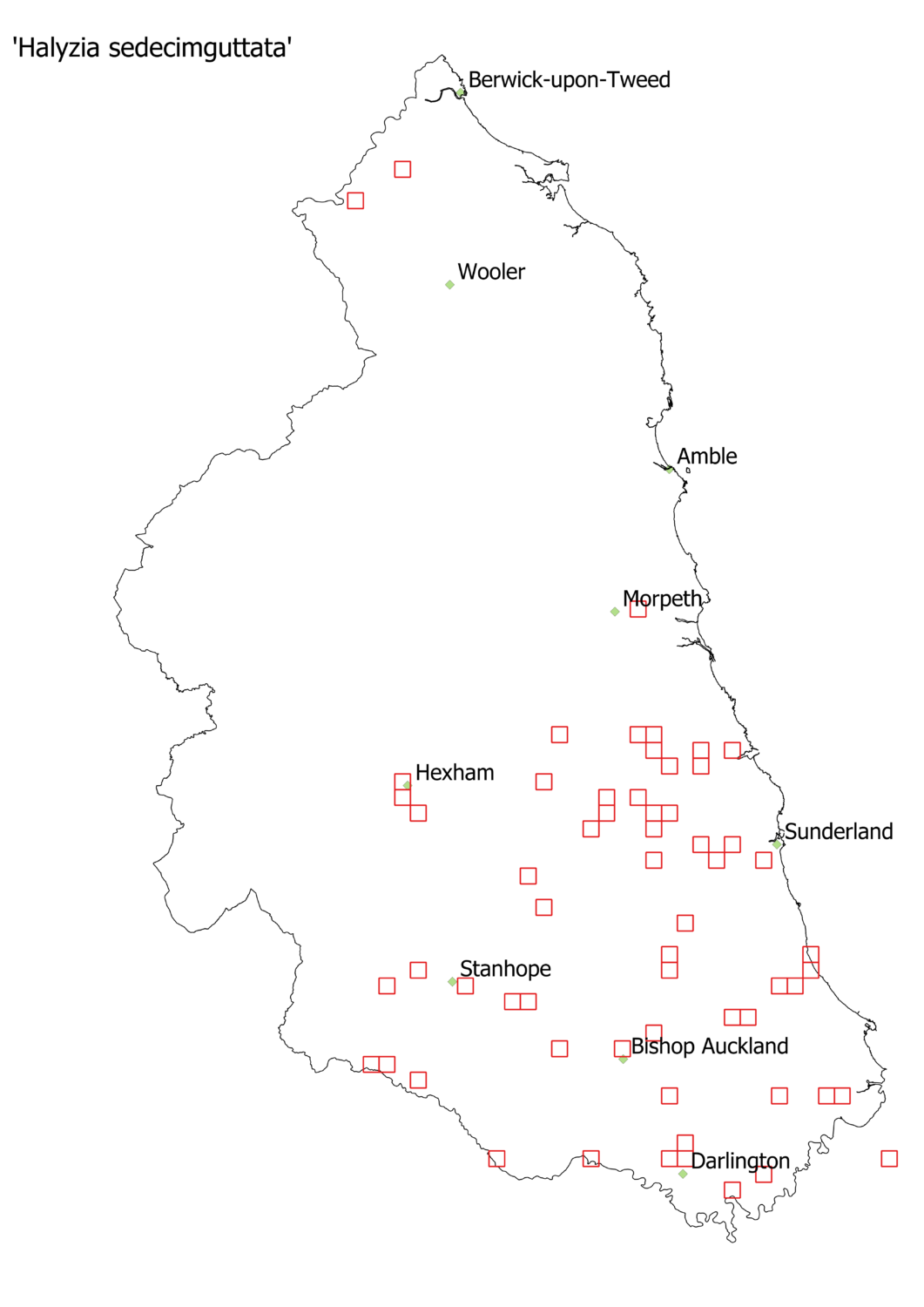
Distribution map of Orange Ladybird (ERIC North East data)
